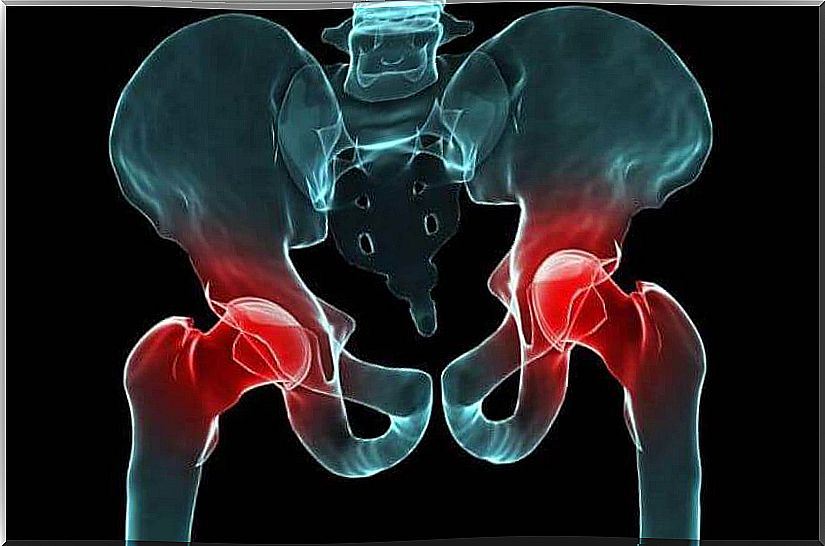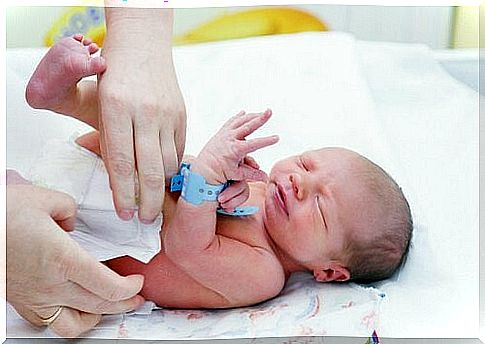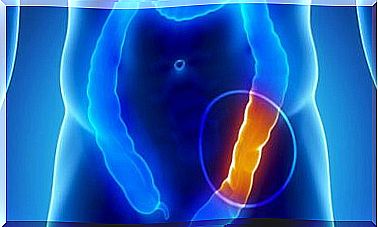Hip Dysplasia: Causes And Treatments
Hip dysplasia is a congenital disorder, that is, it appears at birth. This disorder affects the hip joint. It has an incidence of one in every 1000 live births.
In normal situations, the hip is shaped like a ball-and-socket joint. When a person is born with hip dysplasia, the cup is usually shallow. In this way, it allows the ball-shaped area of the femur to slide in and out of the shell. Thus, the “ball” can partially or totally come out of the shell.
On the other hand, mention that most of the people who suffer from this congenital disorder are usually first-born and female babies. Family history with hip dysplasia favors the development of this problem.
Causes of hip dysplasia

Hip dysplasia, therefore, is a situation in which there is an alteration of growth at the level of anatomical structures, including the soft tissues of the joint.
Today, this disorder is considered to be the consequence of eccentric pressures on the femoral head during the last month of pregnancy.
However, hip dysplasia is considered a “multifactorial inheritance” disorder. With this term, experts mean that the birth defect is determined by several factors, both genetic and environmental.
For example, one of the environmental factors believed to contribute to hip dysplasia is the baby’s response to the mother’s hormones during pregnancy.
A narrow uterus that does not allow for fetal movement or breech delivery can also cause hip dysplasia. Also, another fact to keep in mind is that the left hip is usually the worst stop. This is due to the position of the fetus within the uterus.
Treatment for hip dysplasia

The objective of the different treatments for hip dysplasia is to achieve, quickly and early, a reduced hip in a stable and safe way.
After having achieved a reduction and restoration of the concentric pressure of the femoral head within the acetabulum, its roof ossifies and develops again, especially within the first two years of life, during which time the dysplasia is reversible. to a great extent.
The indicated treatment will depend on several factors, such as whether the dislocation is typical or teratogenic, the age or duration of the dislocation, among others.
Treatment from birth to six months
After reduction, the second stage aims to preserve the physiological position. For this, different devices are usually used, the most used being the Pawlik harness.
This harness is a dynamic device that allows active hip movement within the safety zone. Thus, it allows the normal development of the acetabulum and the femoral head, as the hip moves in its reduced position.
The duration of treatment varies depending on the child. Once the treatment is finished, X-rays must be taken to check if the joint is developing correctly.
Treatment at six to eighteen months

This treatment is used when the previous one has failed and in cases where the diagnosis has been later. Normally, the treatment in this period of time is surgery. The fundamental factor in the treatment of hip dysplasia is to achieve a concentric reduction of the femoral head.
Once this is achieved, the second step is to maintain the reduction and improve the stability of the hip, and it may become necessary to carry out osteotomies (surgical section or cut of a bone). Among them, several types can be differentiated:
- Salter’s iliac.
- Femoral.
- Acetabular.
- Sutherland’s Iliac.
- Iliaca triple Steel.
- Acetabuloplasties.
Conclution
Hip dysplasia is a disorder that occurs more in female than male babies. It appears at the time of birth, which is why it is said to be a congenital disorder and affects 1 in 1000 live-born babies.
This disorder today can be reversed, normally, in a fairly simple way. However, when it is diagnosed late, professionals tend to opt for subjecting the patient to surgical intervention.
If you have any questions about this disorder, do not hesitate to tell a professional so that they can tell you which is the most appropriate treatment for your situation.








